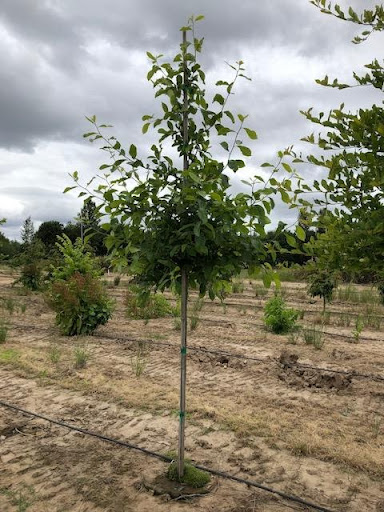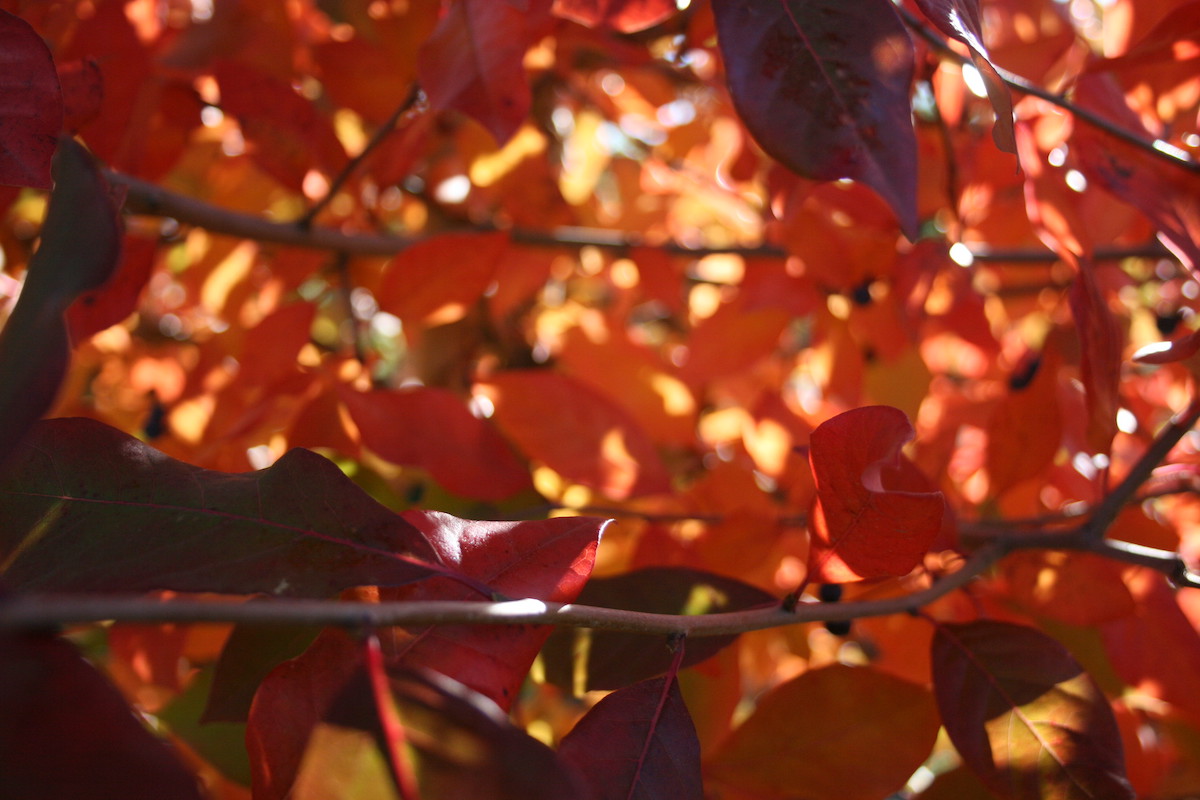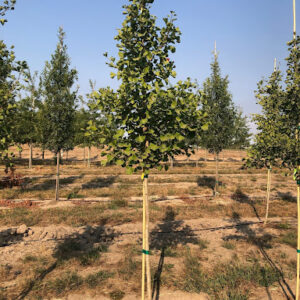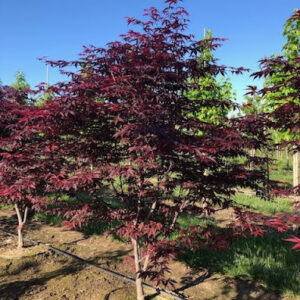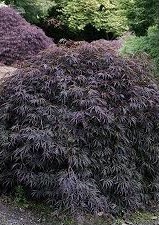Nyssa sylvatica – Black Gum Tree
$250.00
Botanical Name: Nyssa sylvatica
Alternate Name: Black Tupelo, Blackgum
The Black Gum tree (Nyssa sylvatica), also known as the Black Tupelo tree is a majestic, medium to large sized deciduous tree. This tree grows with a straight, dominant leader and branches growing out at a right-angle. The Black Gum starts off with a pyramidal shape as a juvenile. As it matures, it develops a more rounded, conical crown. Black Gum is prized for its bright red fall color and the shade it provides. This tree grows to a height of 30-50 feet and a spread of 20-30 feet.
The leaves of the Black Gum tree are attractive, glossy, and dark green, with a lighter green underside. They grow up to 4-5 inches in length and are elliptical to obovate in shape – broadening slightly towards the tip of the leaf. The margins are either finely toothed or entire. In the fall, Black Gum puts on a vibrant display with the leaves turning a stunning deep scarlet red.
The Black Gum tree can be male or female, although both trees can develop a number of perfect flowers (containing both male and female parts). However, in order to produce fruits on the female tree, a male tree must also be planted nearby. The flowers appear in May or June and are whitish-green. They are fairly inconspicuous but nectar rich and very attractive to bees.
After the flowers, long fruits develop and ripen to a dark blue color. They are oval shaped and half an inch in length. The fruits are edible but very sour and more attractive to wildlife than people.
The Black Gum tree can grow in both wet and dry soils but prefers moist soils. It will also tolerate standing water. This tree can also be somewhat drought tolerant once established.
No serious disease or insect problems. The leaves can be susceptible to leaf spots, canker disease, and tree rusts.
Product Dimensions
The purchased tree will be within the ranges below. If you require a specific size, please call us at
(503)585-8337
Please review Product shipping dimensions to ensure size of vehicle used for pickup of tree is sized correctly.
Click here for more information.
- Caliper Range p
- 1 3/4"-3"
- Height Range p
- 8-12'
70 in stock
| Shape |
Conical, Pyramidal
|
| Flower Color |
Greenish-White
|
| Flowering Time |
June, May
|
| Fall Color |
Red
|
| Growth Rate |
Slow
|
| Uses |
Large Gardens, Lawn Tree, Park Tree, Rain Gardens, Shade Tree, Street Tree, Woodland
|
| USDA Zones |
3, 4, 5, 6, 7, 8, 9
|
| Mature Height |
30'-40', 40'-50'
|
| Mature Width |
20'-30'
|
| Exposure |
Full Sun, Partial Shade
|

